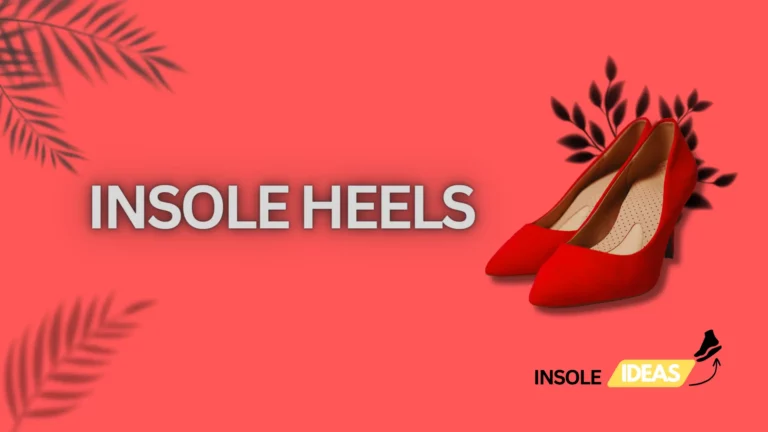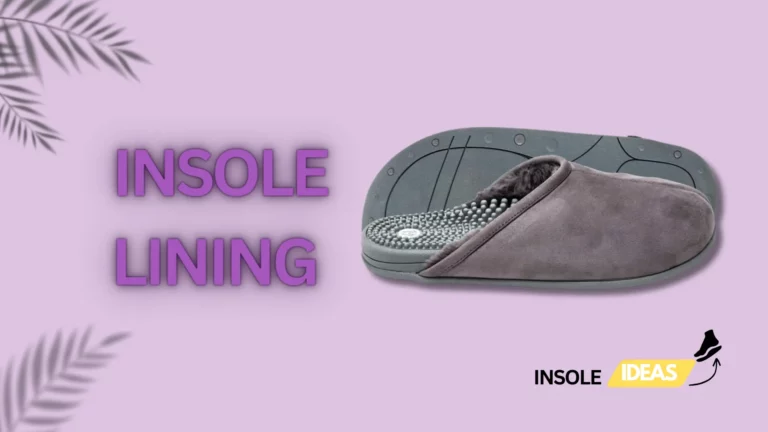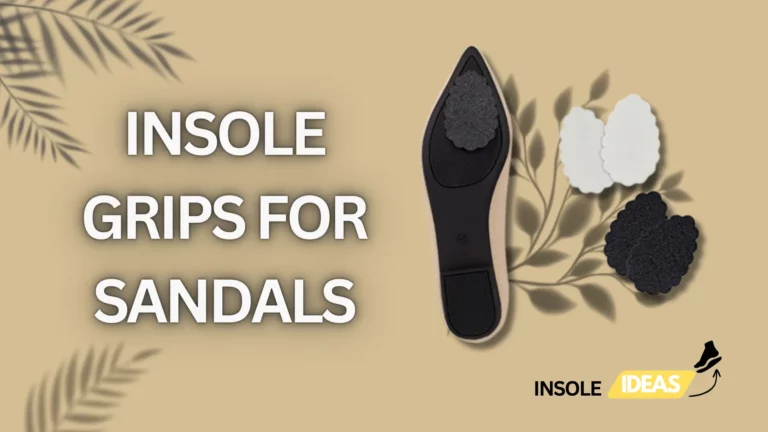What insole do i need?
A Comprehensive Guide to Choosing the Right Insole
When it comes to footwear, insoles are sometimes disregarded, although they are essential for giving your feet support and comfort. These unsung heroes serve as the interface between your foot and the shoe, absorbing shock, reducing pressure points, and enhancing overall shoe performance. Beyond mere comfort, the right insole can significantly contribute to foot health and alleviate various foot-related issues.
Impact on Foot Health
The health of your feet is intricately linked to the quality of your insoles. Ill-fitting or unsupportive insoles can lead to a range of problems, from mild discomfort to more severe issues such as plantar fasciitis, arch pain, and even back pain. Choosing the correct insole tailored to your foot’s needs can prevent and address these concerns, promoting long-term foot health and overall well-being.
How the Right Insole Can Enhance Comfort
Comfort is a subjective experience influenced by various factors, with footwear being a primary contributor. The right insole can transform your shoe-wearing experience by providing cushioning, stability, and a proper fit. This not only prevents fatigue and discomfort but also allows you to go about your daily activities with ease, whether it’s a casual stroll or a rigorous workout.
Understanding Your Foot Arch
Identifying Your Arch Type
High Arch
Individuals with high arches often face challenges related to insufficient shock absorption. The arch does not flatten enough to dissipate impact forces properly, leading to increased pressure on the heel and ball of the foot. Insoles designed for high arches focus on cushioning and arch support to distribute weight more evenly and reduce strain.
Medium Arch
A medium arch is considered the most biomechanically efficient, providing a balance between flexibility and support. Insoles for medium arches typically aim to maintain this natural alignment while offering moderate cushioning and reinforcement for added comfort during various activities.
Low Arch
People with low arches, or flat feet, may experience overpronation, where the foot rolls excessively inward. Insoles for low arches prioritize stability and motion control to correct this tendency, providing adequate arch support and preventing potential issues such as shin splints and knee pain.
Matching Arch Type with Insole Support
Understanding your foot arch type is the first step towards finding the perfect insole. Once identified, selecting insoles with the appropriate level of support—whether it’s extra cushioning, moderate reinforcement, or enhanced stability—ensures a harmonious alignment that caters to your unique foot structure. This personalized approach optimizes comfort and addresses potential foot health concerns, making each step a confident and pain-free experience.
Types of Insoles
Cushioned Insoles
The purpose of cushioned insoles is to reduce impact on the feet and absorb shock, adding an additional layer of comfort. Typically created from materials like memory foam or gel, these insoles excel at creating a soft and supportive environment, making them suitable for persons seeking improved cushioning throughout daily activities. They are particularly beneficial for those with high arches or anyone looking to alleviate pressure on sensitive areas.
Support Insoles
Support insoles focus on reinforcing the arches and providing stability to the foot. Engineered with materials like EVA or polyurethane, these insoles are designed to address issues related to overpronation or underpronation. By promoting proper foot alignment, support insoles help distribute weight evenly and reduce strain on joints, making them a valuable choice for individuals with medium or low arches.
Custom Orthotics
Benefits
Custom orthotics are personalized insoles crafted to meet the specific needs of an individual’s foot anatomy. Tailored to address unique biomechanical concerns, these insoles offer unparalleled support, alignment correction, and comfort. They can alleviate various foot problems, enhance performance, and contribute to long-term foot health by providing a customized solution that caters to the wearer’s specific requirements.
Considerations
While custom orthotics offer exceptional benefits, they come with considerations such as cost and the need for professional assessment. Obtaining custom orthotics involves a consultation with a podiatrist or orthopedic specialist, and the expense may be higher compared to off-the-shelf insoles. However, the tailored support and relief they provide often outweigh these considerations for individuals with specific foot conditions or discomfort.
Material Matters
Gel Insoles
Gel insoles are a well-liked option for anyone looking for relief from impact-related discomfort and foot fatigue because of its outstanding shock-absorbing capabilities. The gel material adapts to the contours of the foot, providing cushioning and support in key areas. Gel insoles are particularly effective for those with plantar fasciitis or individuals engaging in high-impact activities.
Foam Insoles
Foam insoles offer a balance of cushioning and support. These insoles, which are made of materials like memory foam or EVA, conform to the shape of the foot to give a personalized fit. Foam insoles are adaptable, fit a range of foot shapes, and are frequently selected for their capacity to lessen pressure spots and improve general comfort when standing or walking for lengthy periods of time.
Leather Insoles
Leather insoles combine durability with a classic look. While providing a firm and supportive base, leather insoles also offer breathability, making them suitable for different types of footwear. Their natural properties allow for moisture absorption, keeping the feet dry and comfortable. Leather insoles are favored for their longevity and the timeless appeal they bring to shoes.
Understanding Material Impact on Comfort
The choice of insole material significantly influences the overall comfort and performance of footwear. Each material has unique properties affecting factors like cushioning, support, and breathability. A comfortable and supportive fit that is customized to meet individual needs is ensured when people are aware of the influence of materials and can make educated selections based on their preferences and unique foot problems.
Foot Conditions and Specialized Insoles
Plantar Fasciitis
Recommended Insoles
Plantar fasciitis, characterized by inflammation of the heel’s connective tissue, often requires insoles with substantial arch support and cushioning. Insoles featuring features like deep heel cups and additional padding under the arch can help alleviate symptoms by providing proper support and redistributing pressure.
Tips for Relief
In addition to specialized insoles, individuals with plantar fasciitis can benefit from lifestyle adjustments. Stretching exercises, proper footwear, and avoiding prolonged periods of standing or walking barefoot on hard surfaces contribute to effective relief. Combining these strategies with recommended insoles enhances the overall management of plantar fasciitis.
Flat Feet
Tailored Insole Solutions
Low arches, or flat feet, can cause pain and overpronation. Tailored insoles for flat feet focus on providing arch support, stability, and motion control. Insoles with a pronounced arch and features like reinforced heel cups help correct the alignment of the foot, reducing strain and preventing potential issues associated with flat feet.
Preventative Measures
Individuals with flat feet can take preventative measures to maintain foot health. Choosing shoes with the right arch support, working out the muscles in the foot and ankle, and avoiding activities that might make overpronation worse all help to reduce pain and possible problems related to flat feet. Combining these measures with the use of tailored insoles enhances the overall support and stability for individuals with flat feet.
Choosing the Right Size
Importance of Proper Sizing
Selecting the right size for your insoles is paramount to ensuring maximum comfort and effectiveness. Ill-fitting insoles can lead to discomfort, blisters, and even exacerbate existing foot issues. Proper sizing is not only about matching the insole size to your shoe but also considering the specific contours of your feet. Taking the time to find the perfect fit contributes to a seamless integration between your foot, the insole, and the shoe, optimizing overall support and performance.
Size Conversion Tips
Navigating size conversions can be challenging, especially when dealing with international or different sizing systems. It’s crucial to refer to a reliable size chart to accurately convert your shoe size to the corresponding insole size. There may be differences in size, so pay heed to any special advice the insole maker provides. Additionally, consider trying on insoles in-store or purchasing from retailers with flexible return policies to ensure the chosen size meets your comfort expectations.
Insole Trimming and Adjustments
In some cases, achieving the perfect fit may require a bit of customization. Many insoles come with guidelines for trimming to fit different shoe sizes. This allows individuals with slightly larger or smaller shoes to tailor the insoles for a snug fit. To preserve the insole’s structural integrity, you must, nevertheless, strictly follow the manufacturer’s guidelines. Trimming should be done gradually, testing the fit regularly to ensure optimal comfort and support.
Insoles for Different Footwear
Athletic Shoes
Insoles for athletic shoes are engineered to address the specific demands of various sports and physical activities. They often feature enhanced cushioning, arch support, and impact absorption to provide comfort during high-impact movements. Depending on the sport, individuals may choose insoles with additional features such as moisture-wicking properties or antimicrobial treatments to cater to the unique requirements of athletic footwear.
Dress Shoes
Dress shoes, known for their sleek and often narrow design, may not always provide sufficient support on their own. Insoles designed for dress shoes prioritize slim profiles while offering adequate cushioning and arch support. These insoles seamlessly integrate into the limited space of dress shoes, ensuring a comfortable and supportive experience without compromising the shoe’s aesthetic appeal.
Casual Footwear
Casual footwear covers a broad spectrum of styles, from sneakers to loafers. Insoles for casual footwear strike a balance between versatility and support. They often provide moderate cushioning and arch support, catering to individuals who engage in a variety of daily activities. Casual insoles are designed to fit a wide range of shoe types, offering a reliable solution for everyday comfort.
High Heels
High heels place additional strain on the feet, ankles, and lower back, making supportive insoles crucial for mitigating discomfort. Insoles for high heels are typically slim and discreet, fitting seamlessly into the confined space of the shoe. They prioritize forefoot cushioning and arch support, helping distribute pressure and reducing the impact on the ball of the foot. This added support contributes to a more comfortable experience during extended periods of wearing high heels.
Work Boots
Work boots are often worn for extended periods in demanding environments, requiring insoles that provide durability and optimal support. Insoles for work boots are designed to withstand rugged conditions while offering features like reinforced arch support, shock absorption, and moisture-wicking capabilities. These specialized insoles contribute to fatigue reduction, foot stability, and overall comfort, making them an essential component for individuals working in physically demanding occupations.
Testing Insoles Before Purchase
In-Store Tips
There are important factors to take into account when purchasing insoles in-store to make sure you make the right choice. First and foremost, bring the shoes you intend to use the insoles with to test compatibility. Walk around the store to assess comfort, arch support, and overall feel. Pay attention to any pressure points or discomfort. Additionally, inquire about the store’s return policy, enabling you to exchange or return the insoles if they don’t meet your expectations once used in your everyday environment.
Online Purchases Considerations
Online insole purchases require a slightly different approach due to the inability to physically try them on. To begin, take an exact measurement of your foot size and consult the manufacturer’s sizing guide. Read product descriptions carefully, focusing on features such as arch support and cushioning. Look for insoles with a clear return policy, ensuring you have the option to exchange or return them if they don’t meet your expectations. To assess the experiences of others with comparable requirements, make use of consumer evaluations and ratings, which are invaluable tools.
Customer Reviews and Ratings
Before finalizing any insole purchase, delve into customer reviews and ratings. These insights provide firsthand accounts of users who have tested the product in real-world scenarios. Look for reviews from individuals with similar foot conditions or footwear preferences, as their experiences can offer valuable guidance. Evaluate consumers’ overall happiness, taking note of remarks regarding comfort, durability, and any possible problems. Utilizing customer feedback helps paint a comprehensive picture of the insole’s performance and aids in making an informed decision.
Longevity and Maintenance
Durability Factors
Understanding the durability factors of insoles is essential for ensuring a lasting investment. Consider the material composition – high-quality materials like EVA, memory foam, or gel tend to offer better longevity. Reinforced arch support and heel cups contribute to the overall durability of the insole. Assess the stitching and overall construction for signs of robustness. By choosing insoles with durable components, you extend their lifespan and maximize the value of your investment.
Cleaning and Care
Proper cleaning and care significantly impact the longevity and performance of insoles. Regularly remove the insoles from your shoes to allow them to air out. Use a mild soap solution or a moist cloth to gently wash them down, depending on the material. Keep them out of the water as too much moisture can damage their structural integrity. Allow the insoles to dry completely before reinserting them into your shoes. Implementing a simple cleaning routine enhances comfort and prevents the buildup of odors or bacteria.
Knowing When to Replace
Insoles, like any other footwear component, have a finite lifespan. Recognizing when to replace them is crucial for maintaining optimal foot support and preventing potential discomfort. It’s time for a replacement if there are indications of wear and tear, loss of cushioning, or a decrease in arch support. If you notice an increase in foot pain or discomfort that wasn’t present initially, it could be a signal that the insoles are no longer providing adequate support. To maintain ongoing foot health and comfort, periodically check the state of your insoles and buy a new pair when degradation is noticeable.
Expert Recommendations
Podiatrist Insights
Podiatrists, as specialists in foot health, offer invaluable insights when it comes to choosing the right insoles. A podiatrist can assess your foot structure, gait, and any existing conditions to provide personalized recommendations. They may suggest specific types of insoles, such as custom orthotics, tailored to address your unique needs. Seeking professional advice from a podiatrist ensures that your choice of insoles aligns with your foot health goals, preventing potential issues and promoting overall well-being.
Shoe Store Specialists
Specialists at shoe stores often possess a wealth of knowledge about insoles and footwear. These professionals are trained to analyze foot types and recommend suitable insole options based on your needs. They can guide you through the selection process, offering insights into different materials, support levels, and styles. Shoe store specialists may also provide in-store testing opportunities, allowing you to experience the insoles before making a purchase. Their expertise enhances the overall shopping experience and ensures you make an informed decision.
Online Consultations
In the digital age, online consultations with footwear experts have become increasingly accessible. Many online platforms offer virtual assessments, allowing you to share information about your foot type, concerns, and preferences. Based on this information, experts can recommend suitable insoles and provide guidance on proper sizing. While online consultations lack the hands-on assessment of in-store experiences, they serve as a convenient option for those who may not have access to local shoe stores or podiatrists.
Insoles in Popular Culture
Celebrity Endorsements
Celebrities often play a role in popularizing trends, including the use of insoles. Many celebrities openly endorse the benefits of wearing supportive insoles for both comfort and style. Their testimonials contribute to the mainstream acceptance of insoles as a practical accessory, emphasizing the importance of foot health. Celebrity endorsements may also bring attention to specific brands or types of insoles, influencing consumer choices and shaping the perception of insoles as a fashion-forward and health-conscious accessory.
Fashion Trends in Insoles
Insoles have become not only a functional necessity but also a fashion statement. Fashion trends in insoles encompass a range of styles, from vibrant colors and patterns to innovative materials. In recent years, insoles with unique designs and customizable features have gained popularity. With the help of this trend, people may use their choice of insoles to show who they are, turning them from a strictly practical item into a stylish accessory that completes their look.
Conclusion
Final Thoughts
Choosing the perfect insole is a decision that goes beyond mere comfort – it’s a step towards prioritizing foot health and overall well-being. The journey involves understanding your foot type, considering various insole types, and making informed choices based on expert recommendations and personal preferences.
Encouragement for Readers to Invest in the Perfect Insole
Investing in the perfect insole is an investment in your daily comfort and long-term foot health. The correct insole may improve your experience wearing shoes, ease foot-related problems, and support an active and pain-free lifestyle, as this tutorial has shown. Take the time to explore your options, seek expert advice, and make a choice that aligns with your unique needs. Your feet will thank you for the support and care you provide through the thoughtful selection of the perfect insole.
FAQs
Identify your foot type and activity level. Try insoles in-store for comfort. Consider podiatrist advice for personalized recommendations.
Measure feet accurately, check shoe type, and account for comfort preferences. Follow manufacturer’s recommendations for the perfect fit.
Insoles fit most shoes, but consider shoe design and match insole type to shoe type for optimal fit and performance.
It’s okay, but insoles provide comfort, support, and address foot issues. Personal preference and foot health play a role.





